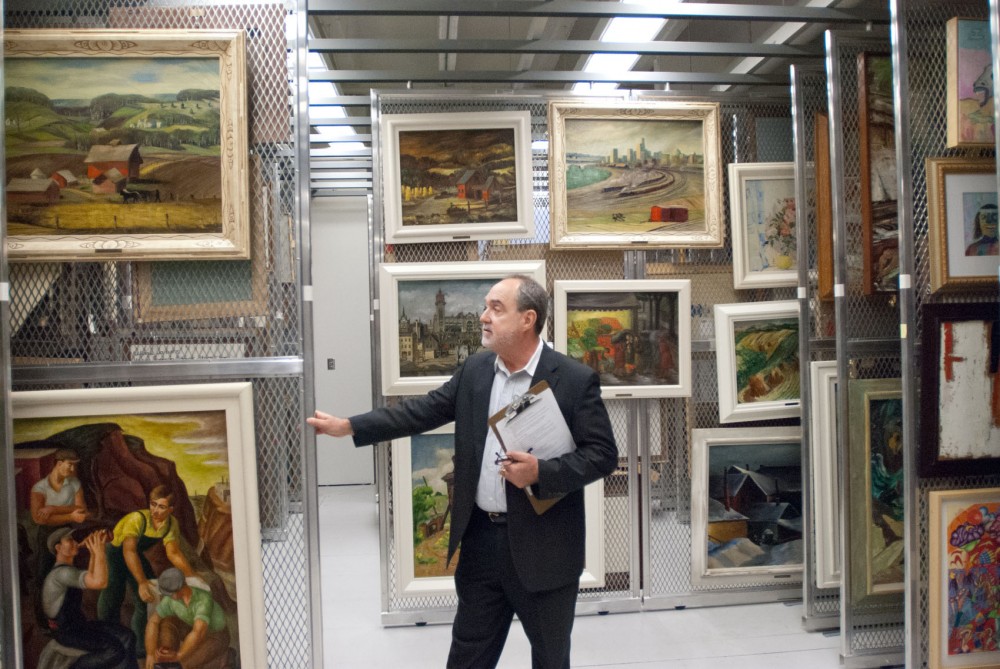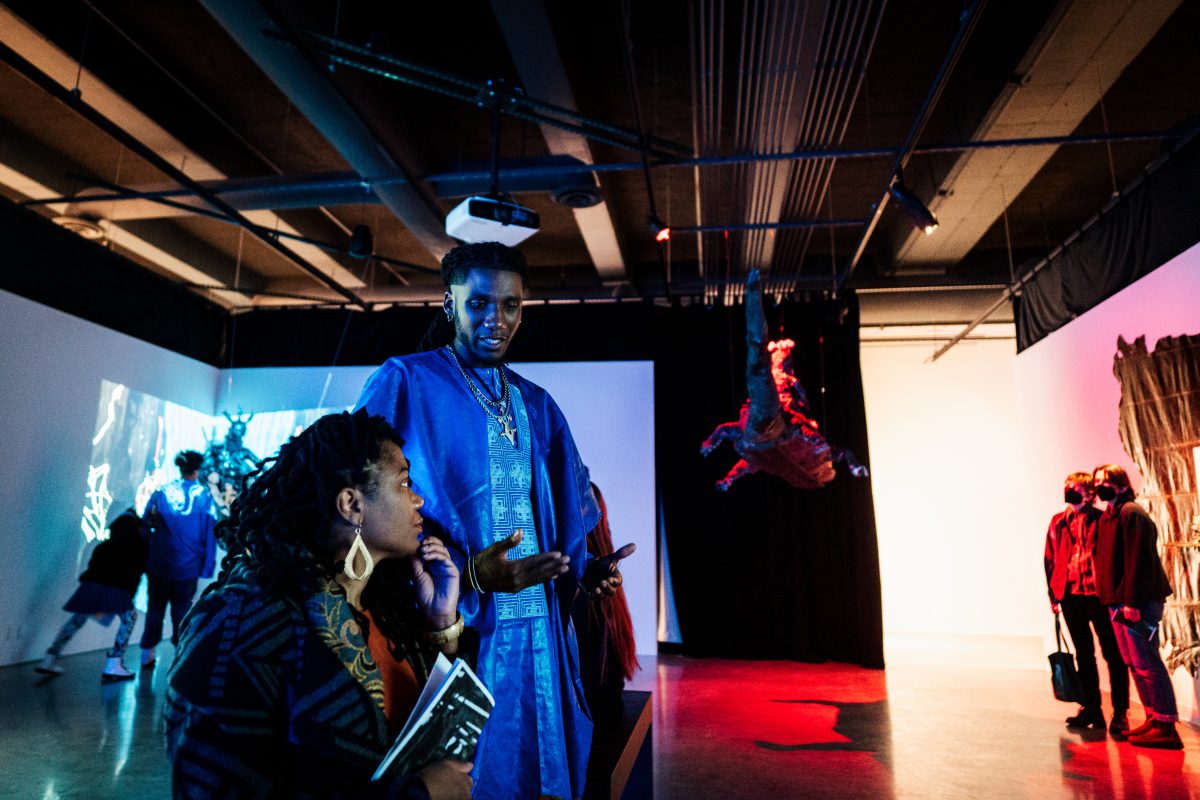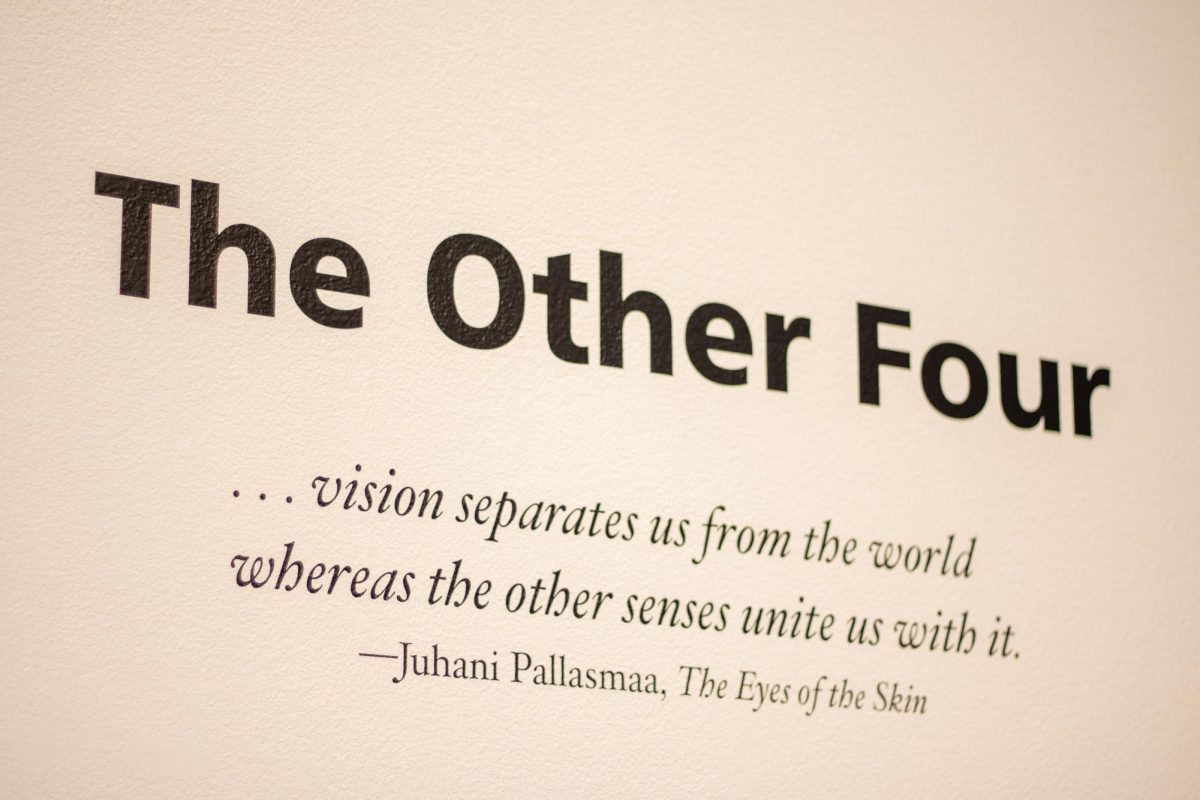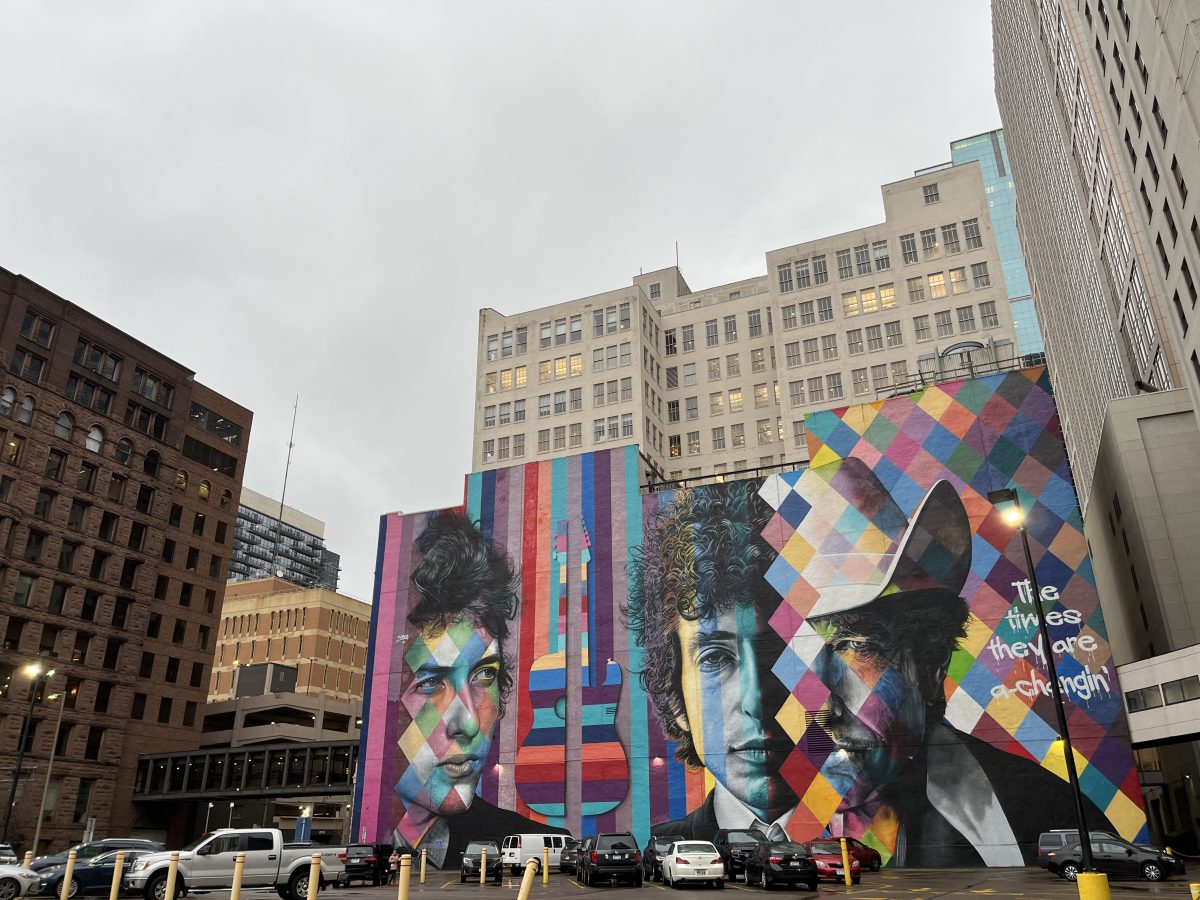In a storeroom deep inside the Minnesota History Center, Brian Szott pulls out a massive rack of paintings. This room alone holds 1,500 of the Center’s 6,000 paintings. The art spans more than five generations.
“Our goal here is to collect art by and about Minnesota, art that tells the Minnesota story,” said Szott, curator and acting head of collections at the Minnesota Historical Society.
The collection is a microcosm of American art history through the lens of the Land of 10,000 Lakes.
That same idea applies to the history center’s newest exhibit, “1934: A New Deal for Artists,” which features 50 works on loan from the Smithsonian American Art Museum. The four Minnesota artists featured in the exhibition are together characteristic of over-arching attitudes surrounding the Roosevelt Administration’s Public Works of Art Project.
The project was the first federally-funded program supporting the arts. It meant to act as a prototype for the better-known Works Progress Administration and its Federal Art Project arm. In seven months, 3,749 artists had been paid to create 15,663 works that were immediately hung in the Department of Labor building, the White House, and other public spaces.
Artists of the time were able to create some of their most celebrated work under the Public Works of Art Project and the Works Progress Administration, but now, Szott says, they exist in relative obscurity.
“Minnesota artists of this generation could have pretty good careers, but they don’t necessarily make it into art history books,” Szott said. “Some of these artists peaked, frankly, when these programs were provided. Afterwards there was this sort of cataclysmic change in art, and just ten years later this work would look very dated.”
The early 1930s was the height of regionalism. Artists would paint what they knew, Szott said, celebrating the beauty and eccentricities of home.
E. Dewey Albinson’s “Northern Minnesota Mine” draws out the bright colors of the dirt in and Eveleth, Minn., pit mine. Albinson extends this lushness to the surrounding town, creating a reassuring picture of the heartland meant to lift the spirits of Americans mired by the Great Depression.
Familiar Minneapolis scenes enchanted Arnold Ness Klagstad, who painted the Stone Arch Bridge, mills, grain elevators and the University of Minnesota campus. His “Administration Building” hangs in the Weisman Art Museum, along with Elof Wedin’s “Fourteenth Avenue,” which portrays the still-recognizable Dinkytown of 1934.
Harry Gottlieb’s “Filling the Ice House,” part of the “1934” exhibition, shows a dozen men working hard to harvest blocks of ice to be used in iceboxes through the summer. A lifelong communist, Gottlieb was often drawn to blue-collar workers.
“Even though there was a time of severe unemployment, [New Deal artists] seemed to focus on laborers. They celebrated the worker,” Szott said. “I think this may have been an effort to participate in the recovery.”
Gottlieb was also one of the first artists to work with modern printmaking techniques, such as screen-printing, which would be ushered further into the mainstream through collaboration between artists and unemployed industrial printers under the Works Progress Administration.
Gottlieb, now lost to relative obscurity, thrived at a time when his politics and his celebration of the worker meshed with the needs of the government and the American people. As the Depression wore on, Gottlieb’s work became more jaded. Other paintings of his in the Minnesota Historical Society’s collection render the unemployed in shades of black, struggling to keep warm, Szott said.
These trends seen in Minnesota art — the reverence for the local and familiar; the optimism toward home and work in the face of economic downturn; and the move toward bleaker subject matter and obscurity in the face of post-war modernism — are present in New Deal art from around the nation in “1934.”
“I’m often asked how Minnesota compares to the nation, with regard to this period of time,” Szott said. “This is an overview of what was going on in 1934 in the nation and Minnesota artists figure well and they play well.”

















